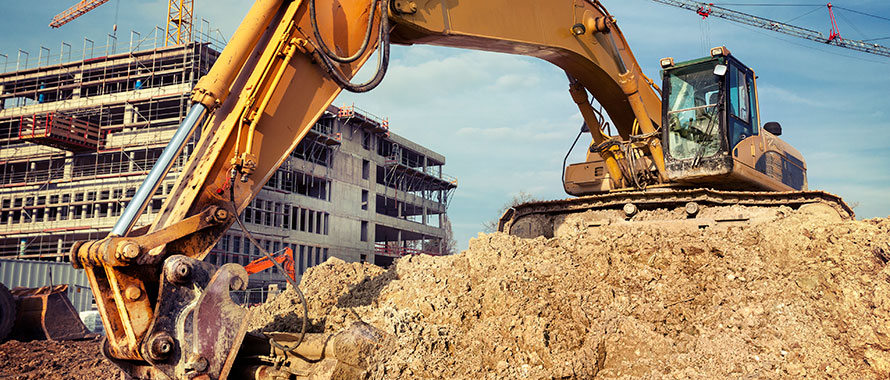Two separate construction accidents in Boston recently caused a stoppage on projects by the region’s largest construction company. According to reports, Suffolk Construction halted work at multiple job sites on May 6 in order to “reinforce safety awareness” after multiple workers were hurt when a former power plant under construction collapsed May 4, followed by an accident at another job site May 5 when a worker fell 30 feet.
Featured Solutions
“These were pretty big news stories for us here in the Boston community,” he said, with the most recent incidents shutting down a subway stop and delaying traffic while officials checked the area for further hazards. “Any time you are talking about injuries, fatalities, or a stoppage of work, that is at the more extreme end when it comes to a construction accident. A lot can go wrong in construction, and the implications of that can be severe.”
By May 10, Suffolk Construction had completed its safety evaluations and resumed work at its Boston job sites, saying in a statement that the company would continue to “aggressively maintain the highest levels of safety,” WCVB reported. From injuries to temporary shutdowns, construction accidents can have far-reaching effects, said Justin Dorman, National Product Manager, Workers’ Compensation, Burns & Wilcox, Charleston, South Carolina.
“It impacts everyone on so many levels, from the workers to the company itself,” he said. “OSHA will be investigating the fall, and if it turns out they were supposed to be using fall protection and that was not done, they could be hit with a hefty fine and even be shut down. A company will lose so much money when work is stopped, when in many cases an initial investment in safety to begin with could have prevented it.”
Construction workers at risk for falls, lifting injuries
When construction accidents occur, losses could be covered under a company’s Workers’ Compensation Insurance, Commercial General Liability (CGL) Insurance, Excess Liability Insurance, Builder’s Risk Insurance, or Professional Liability Insurance.
According to the National Institute for Occupational Safety and Health, falls are the leading cause of work-related deaths in construction in the U.S., causing over 1 in 3 construction worker fatalities in 2019. The same year, falls, slips and trips caused 32% of nonfatal injuries requiring time off work in the private construction industry, according to the U.S. Bureau of Labor Statistics. In British Columbia, Canada, falls were the cause of 4,050 worker injury claims in 2021, hundreds of which were linked to the construction industry, CTV News Vancouver reported on March 8.

A company will lose so much money when work is stopped, when in many cases an initial investment in safety to begin with could have prevented it.
“There are numerous ways individuals can get hurt on a job site,” Dorman said. “For Workers’ Compensation, some of the most common and largest claims come from falls. They also come from lifting or straining. Those are two big ones.”
When workers are continually exposed to heavy lifting and heights, “that just makes the industry itself a little more dangerous,” Dorman said.
These injuries can leave employees unable to work for weeks, months or longer. In 2019, fall, slip and trip claims kept workers home for a median of 28 days, the U.S. Bureau of Labor Statistics reported. Workers’ Compensation Insurance, which is regulated at the state level, is essential for any employer and can pay for injured workers’ medical expenses, a portion of their salary while they are unable to work, and any rehabilitation needed to get them back to work. It can also provide death benefits if a worker is killed in an accident.
“The coverage itself is very important,” Dorman said. “Having risk management there to prevent accidents is the most important thing they can do. These things happen, it is sad when they do, and that is why insurance exists. It is there to help companies, employees and their families. You can do as much as you can to mitigate these losses, and Workers’ Compensation Insurance is going to do its job when somebody gets injured.”
Accident-related bystander injuries, property damage can cause further losses
Construction accidents are a risk not only to the workers on site, but also to the general public and nearby property. In April, a woman in Chicago was seriously injured while walking on a sidewalk when debris from a building fell on her, FOX 32 Chicago reported. The building reportedly had scaffolding placed on the sidewalk recently because of a similar incident. In January, a man suffered serious injuries after concrete fell from a construction site in Yorkville, Ontario, CP24 News reported.
A construction company’s CGL Insurance can cover expenses related to third-party bodily injury and property damage, as well as legal defense in the event of a lawsuit. Defense costs are an important component of the policy, Sullivan said.
“Whether there is a pedestrian walking by and they get hit by a fallen piece of roofing or other types of construction material, or damage done to nearby buildings, those are the main types of expenses you are looking at,” he explained. “There are tailored insurance programs for contractors and construction companies when it comes to the forms and endorsements.”
Due to the risk of severe, high-cost incidents, construction companies also typically require Excess Liability Insurance. “When you have incidents like this with fatalities or major property damage, these claims can rise in cost very quickly,” Sullivan said. “With the tough litigious climates in the Northeast, a lot of the settlements and damage that come with this can really be substantial. The last thing you ever want an insured to do is have an uncovered loss or not have enough insurance limit to cover the cost of that settlement or damages.”
Excess Liability Insurance is “a very hot topic within the construction industry right now,” Sullivan added. “When it comes to trying to save on costs, excess limits is not the place to cut back,” he said. “Many owners and developers will require a certain amount of limit.”
Contractual requirements should always be considered when selecting insurance coverage, Sullivan noted. It is also important for general contractors, real estate developers and others to obtain certificates of insurance for subcontractors and check for any necessary hold-harmless wording. “Those are two important things to really keep your eye on,” he said. “The general contractor needs to be properly insured and use proper contracts with subcontractors to ensure everyone is carrying the correct coverage and limits so that the transfer of risk can be there.”
Other types of construction-related lawsuits, including those involving errors or third-party loss of income related to construction delays, may be covered by a firm’s Professional Liability Insurance, Builder’s Risk Insurance or other policies.
“Talk to your insurance professional about other important coverages,” Sullivan said. “They can tailor coverage for your specific operations. If you are in the construction industry, you want to work with a retail broker familiar with the construction fields and that has insurance carriers that can target and have the specific appetite to underwrite and perform risk control for the construction industry in particular.”
Reduce accidents with risk management, insurance resources
Large construction companies often employ full-time risk managers, which is strongly recommended, Dorman said. Smaller companies that may not be able to hire a dedicated risk manager should consider consulting with a risk manager or third-party loss control company regularly, in addition to seeking advice from their Workers’ Compensation insurance carrier.
“The risk manager will know what is going on with OSHA laws and make sure your company is staying within regulations,” he explained. “Most insurance providers are also very welcoming to providing safety information. Some even provide on-site walk-arounds, where they can talk to the staff, make sure equipment is up to date, and offer recommendations. Construction companies may not think about these things day to day because they are just doing their job, but that investment into safety is going to save them in the long run.”
This is also important when it comes to CGL Insurance and other policies, Sullivan added. “Ask and be willing to accept the resources that are out there,” he advised. “Whether it is with your retail agency or insurance carrier, there may be loss control measures that can be applied to your everyday business going forward. Do not be shy about asking for those resources that might be at your disposal based on the insurance program you are paying into.”

Companies should ask their insurance broker what they offer, besides just providing the Workers’ Compensation. They can buy strictly on price, or pay more for a carrier that really specializes in construction and can help with workplace safety.
Construction firms should know that their history of workplace injuries will be public information to future insurance carriers and could mean higher rates or more difficulty obtaining coverage. “Carriers are going to look at your history,” Dorman said. “They will see that, and they could penalize them by charging them more for their insurance.”
Despite being regulated by individual states, there are some differences in what Workers’ Compensation Insurance carriers offer their clients, Dorman pointed out.
“Companies should ask their insurance broker what they offer, besides just providing the Workers’ Compensation. They can buy strictly on price, or pay more for a carrier that really specializes in construction and can help with workplace safety,” he said. “You do get what you pay for.”
Learn more about the State of the Construction Insurance Market in the latest Burns & Wilcox webinar.








